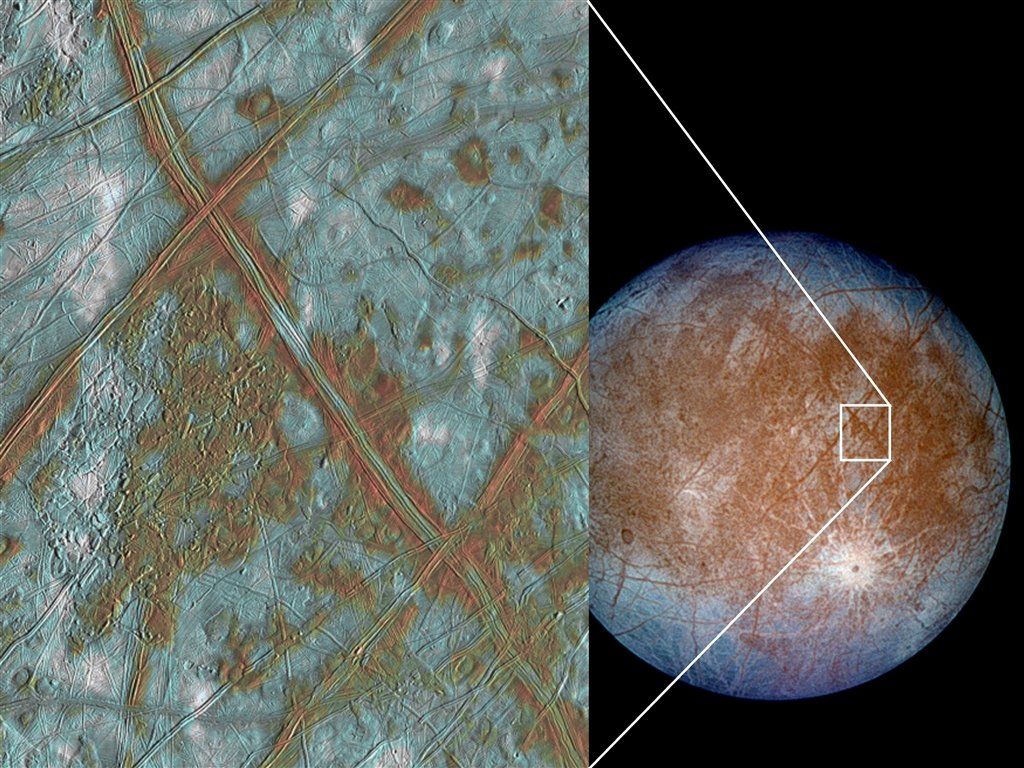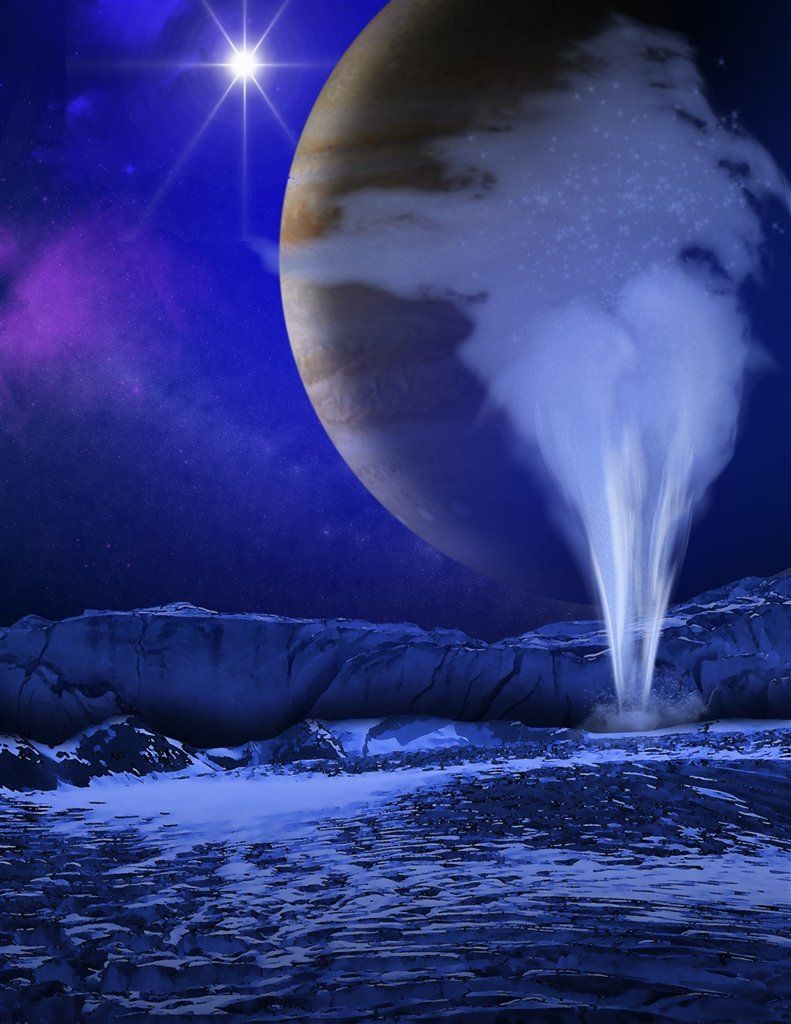This web page is created within BALTICS project funded from the European Union’s Horizon2020 Research and Innovation Programme under grant agreement No.692257.
Europa
Europa is the smallest of Jupiter’s Galilean moons. Its diameter is 3,120 km. Europa is about 671,000 km from Jupiter. Because Europa rotates synchronously with its orbital period, one side of the moon is permanently facing the giant planet. Europa completes one orbit of Jupiter in 3.5 Earth days.
Europa’s orbit is slightly elongated, and the distance to Jupiter varies. Therefore, tidal forces are deforming the surface of the moon, creating cracks in the ice crust and possibly triggering volcanic or hydrothermal processes in Europa’s ocean depths, as in the case of Io.
Europa is thought to have an iron core surrounded by a rocky mantle, above which is a saltwater ocean probably more than 100 km thick, which in turn is covered by an ice crust 10 to 30 km thick. The crust has dark lines, lighter and darker circular or elliptical formations, indicating various processes related to the subsurface ocean. Europa has few craters.
Because Europa’s surface is very smooth, it is assumed that water occasionally jets to the surface and freezes there, rebuilding the ice crust.
Research using the Hubble telescope has shown that Europa could be experiencing water vapour eruptions or geysers. This means that Jupiter’s moon is still geologically active.
One piece of evidence in favour of a large subsurface ocean is the deformation of Jupiter’s magnetic field near Europa. This means that Europa has an electrically conducting fluid, which, given the composition of the moon, is most likely to be saltwater. The ocean generates a small magnetic field that envelops Europa and interacts with Jupiter’s magnetic field.
Taking into account all these factors — saltwater ocean, the possible thermal activity in the ocean depths and the chemical elements that might be present in the subsurface ocean — Europa seems a very promising target in the Solar System in the search for life forms familiar to us, most likely microscopic.
If the conditions in a possible ocean might be suitable for microscopic life forms, on the surface they are harsh. On Europa, temperatures range from -160 at the equator to -220 (degrees Celsius) in the polar regions. In these conditions, the ice crust is as hard as a rock. If people ever decided to go to Europa, they would have to contend not only with the biting cold but also with high levels of radiation from Jupiter’s radiation belts. A person on the surface of Europa would receive a lethal dose of radiation in a day. The safest place to settle would be several metres below the surface.
Europa, like the other Galilean moons, was discovered in January 1610. It was initially numbered as II but later renamed Europa.





















